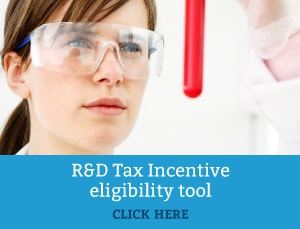Patent Grant Program – Australia’s Patent Box Solution
October 7th, 2014Recent research has indicated that 1000 extra patents per year (that otherwise would not have been filed) could add up to $7 Billion extra GDP per year in the Australian economy. It has been proposed that a new type of government endorsed grant program aimed to offset the cost of patent filing, could be Australia’s answer to the recent U.K. Patent Box controversy.
Why would a Patent Grant Program be more appropriate than a Patent Box tax incentive?
It has been argued that Australia should adopt the U.K.’s Patent Box model due to its greater compatibility with our taxation system over traditional European models. However given the OECD’s concerns regarding the U.K. model’s long-term economic impact and possible tax erosion, the current Australian Senate would not likely immediately legislate this measure if introduced.
Due to the strong link between general patent production and GDP, it is believed that a grant model would be a much more workable alternative to a tax incentive in the short-term. Grant models are also easier to implement as a Ministerial initiative and where the delivery of the grant program was successful in increasing GDP growth, the Government would likely gain bipartisan support to explore, develop and eventually legislate alternative Patent Box tax models that are supported by the OECD.
Service offerings proposed under the Patent Grant Program
It is proposed that the Government introduce an entitlement based Patent Grant Program (PGP), aimed to increase the number of international patent applications originating from Australia.
It is envisaged that the Department of Industry would provide the grant to businesses to offset the cost of preparing and submitting a valid innovation or standard patent application through IP Australia and international patent applications through the Patent Cooperation Treaty (PCT)
Grants would be capped at $50,000 per international patent family and businesses would be permitted to claim indefinitely, for the life of the program.
The PGP would be designed to support businesses in seeking the following services:
- Performance of an international novelty search and initial patentability advice;
- Preparation and submission of Australian Patent application (including a provisional application if required);
- Preparation and submission of international application (under PCT); and
- Converting the international patent application into national applications in foreign jurisdictions (national phase entry).
Each of the above services has a funding cap (as per example 1 below).
| Service Offering and Application Fees | Service Type | Funding Cap |
| Performance of an international novelty search and initial patentability advice | Mandatory | $5,000 |
| Preparation and submission of an Australian patent application (including provisional application if required) | Mandatory | $7,500 |
| Preparation and submission of an international patent application (under the PCT) | Optional | $12,500 |
| Assistance with National Phase Entry | Optional | $25,000 |
| Total amount available per patent application under the program | $50,000 |
Example 1: Service components available and respective funding cap under the PGP.+Mandatory services must be performed in order to applicant to be eligible for grant funding.
Application Process
The PGP is aimed to fund or offset the cost to engage an approved provider to advise, prepare, file and prosecute a patent application as described in Example 1.
An applicant must enter into a funding agreement with the Department of Industry prior to engaging an approved provider.
Businesses will have 18 months to complete all advisory services and submit the patent application as specified in the funding agreement.
When would the grant get paid?
The grant will be paid directly to the approved provider on initial submission of the patent application with IP Australia (and where relevant the international patent application under the PCT).
The approved provider must itemise each performed service and provide a timesheet or otherwise demonstrate that the fee is at arm’s length and on normal commercial terms.
Where fees are accumulated due to an objections being raised against a submitted patent application, the approved provider will have an opportunity to claim these fees separately.
Who are approved providers and how would they be regulated
In order to be recognised as an approved provider, the provider must:
- be aged at least 18;
- be an Australian citizen or permanent resident of Australia;
- be a registered Australian patent attorney;
- be a fit and proper person; and
- by them or by their firm have acted for and submitted at least ten patent applications in the previous financial year.
Additionally, to remain an approved provider, providers must demonstrate that:
- at any point in time, that no more than 10% of patent applications that were submitted (by them or by their firm) as part of the Patent Grant Program had been ultimately rejected by a Patent Office and then abandoned.
Regulation of the approved provider will be jointly managed between the Department of Industry and IP Australia.
Who would be eligible to apply?
To be eligible, a business applying for funding under the PGP must:
- be a sole trader, company or trust;
- be solvent;
- have revenue between $50,000 and $100 million in the current financial year or one of the two preceding financial years;
- possess an Australian Company Number;
- engage an approved provider to conduct mandatory services (as per Example 1).
- have a trading history of at least three years; and
- demonstrate that by applying under the program, the applicant has increased its three year patent production rolling average (as per Example 2).
Introduction of the three year patent production running average
The PGP is intended to drive an increase in patent production over time. It must not fund patent applications that would have otherwise already been filed in any given income year.Therefore, a business applying for a patent under the program must demonstrate the patent application that is subject to the funding increases that business’ average patent production over the last three years in whole numbers.A business will be eligible for PGP funding for all patent applications filed with IP Australia that exceed the running average in the current year i.e. where a business has filed on average two patent applications per year for the last 3 years, the running average is taken to be two. Funding may then be claimed for a third patent application provided two patent applications have already been lodged in the current year. Example 2 illustrates how the running average would work with four scenarios.
Example 2: Incremental patent applications that are eligible for funding under the PGP.
| Patent applications filed by applicant in current year (Y0) | Y-1 | Y-2 | Y-3 | Av++ ^^ | Patent applications eligible for PGP funding in Y0** |
| 1 | 0 | 0 | 0 | 0 | 1 |
| 4 | 3 | 1 | 1 | 2 | 2 |
| 2 | 2 | 1 | 1 | 2 | 0 |
| 1 | 0 | 1 | 0 | 1 | 0 |
++ The running average is 1/3rd of the sum of the number of filed patents for each of the Y-1, Y-2 and Y-3 years rounded up to the nearest whole number.
** Equals Y0 minus the running average. Negative numbers are substituted for zero.
^^ Rolling average will include all patent applications filed within the applicant’s business and where relevant, any patent applications filed with any member of its consolidated tax group.
Conclusion and Next Steps
It is the responsibility of Government to plan and implement appropriate incentives to achieve optimal economic outcomes. The Government must increase patent production so Australia can continue to thrive in a highly competitive global economy.
- GDP growth is not exclusively due to R&D spending of large enterprise. For every thousand patents registered in Australia, there is a predicted 0.5% growth in domestic GDP.
- An incentive that adds 1000 extra patents per year may add about $7 Billion extra GDP per year while costing as little as $50 Million.
- Australia has no grant program aimed at increasing patent production.
- In the short-term, a well-structured patent grant program is more workable than a tax incentive, modelled on the U.K. Patent Box.
- The PGP in the form of a Ministerial guideline may increase Australia’s patent production in the short-term.
The Patent Box debate will not be resolved anytime soon. A patent grant solution is an easy, short-term and lower risk alternative.
Click here to access the full report and modelling.
Categories
- ATO Guidance and Materials
- AusIndustry Guidance and Materials
- Case Law
- Federal Budget 2021
- Federal Budget 2022
- For Accountants
- General Information
- Government Policy and Treasury
- Industry Specific Issues
- Interpretative Decisions
- Legislation and Parliamentary Matters
- R&D Tax Credit
- R&D Tax Funding Strategies
- R&D Tax Loans
- Recent News
- Tax Determinations
Archives
- April 2024
- March 2024
- February 2024
- January 2024
- December 2023
- November 2023
- October 2023
- September 2023
- August 2023
- July 2023
- June 2023
- May 2023
- April 2023
- March 2023
- February 2023
- January 2023
- December 2022
- November 2022
- October 2022
- September 2022
- August 2022
- July 2022
- June 2022
- May 2022
- April 2022
- March 2022
- February 2022
- January 2022
- December 2021
- November 2021
- October 2021
- September 2021
- August 2021
- July 2021
- June 2021
- May 2021
- April 2021
- March 2021
- February 2021
- January 2021
- December 2020
- November 2020
- October 2020
- September 2020
- August 2020
- July 2020
- June 2020
- May 2020
- April 2020
- March 2020
- February 2020
- January 2020
- December 2019
- November 2019
- October 2019
- September 2019
- August 2019
- July 2019
- June 2019
- May 2019
- April 2019
- March 2019
- February 2019
- January 2019
- December 2018
- November 2018
- September 2018
- July 2018
- June 2018
- May 2018
- April 2018
- March 2018
- February 2018
- January 2018
- December 2017
- November 2017
- September 2017
- August 2017
- July 2017
- June 2017
- May 2017
- April 2017
- March 2017
- February 2017
- January 2017
- December 2016
- November 2016
- October 2016
- September 2016
- August 2016
- July 2016
- June 2016
- May 2016
- April 2016
- March 2016
- February 2016
- January 2016
- December 2015
- November 2015
- October 2015
- September 2015
- August 2015
- July 2015
- June 2015
- May 2015
- April 2015
- March 2015
- February 2015
- January 2015
- November 2014
- October 2014
- September 2014
- August 2014
- July 2014
- June 2014
- May 2014
- April 2014
- March 2014
- February 2014
- January 2014
- December 2013
- November 2013
- October 2013
- September 2013
- May 2013
- April 2013
- March 2013
- September 2012
- August 2012
- June 2012


 Free Call: 1300 009 390
Free Call: 1300 009 390






 News & Research
News & Research



